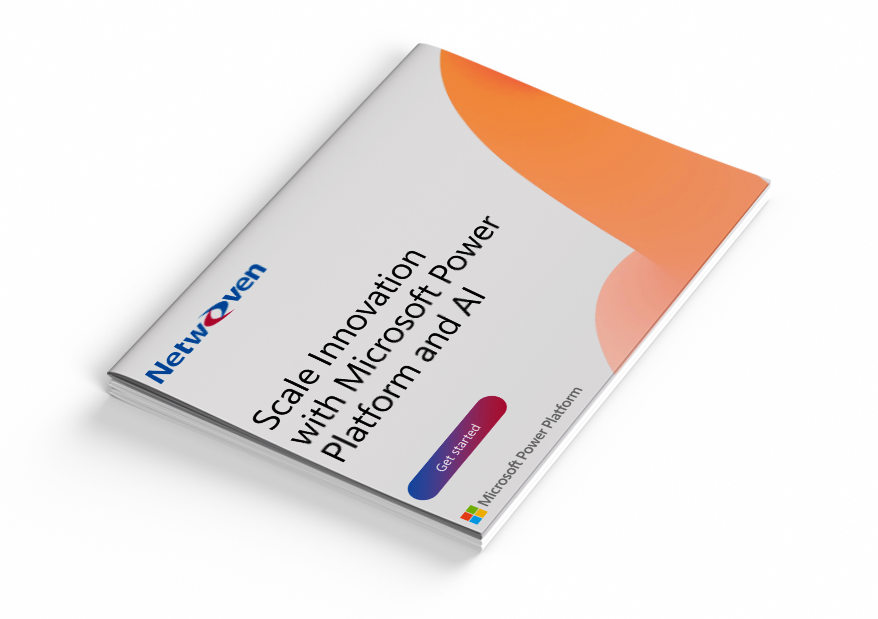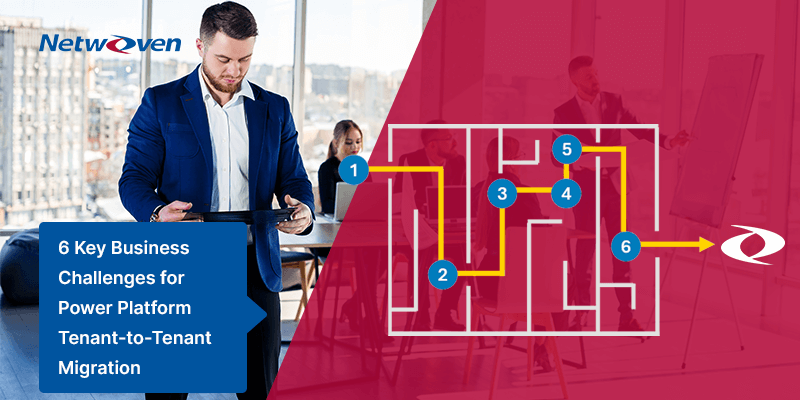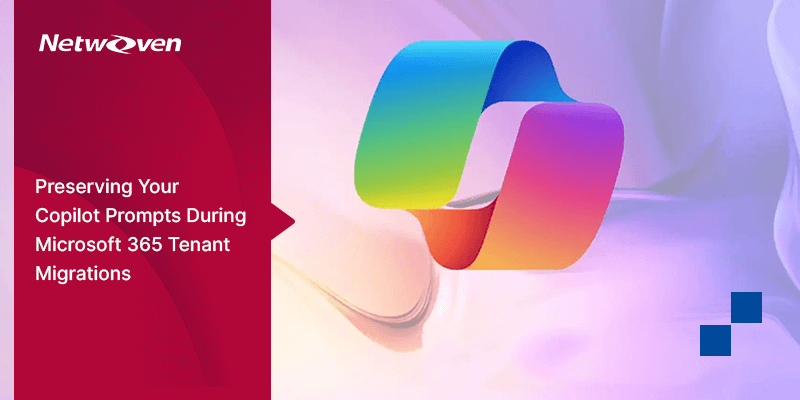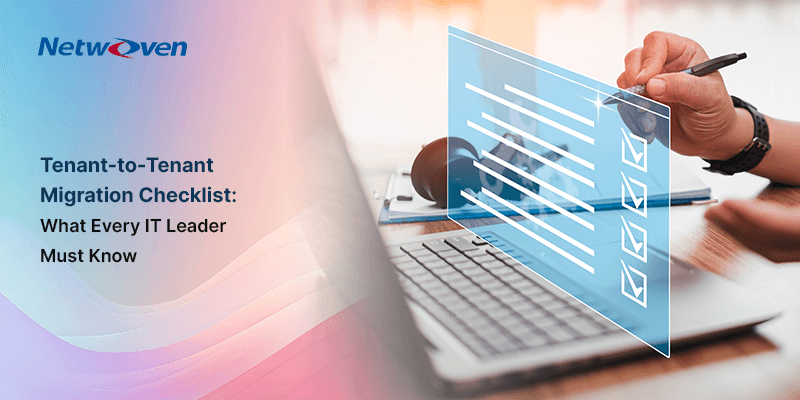Introduction
Power Platform migration from one environment to another, especially during tenant mergers or splits poses considerable business & technical challenges. Organizations must be careful enough to plan and execute the migration to ensure business continuity, seamless user experience, maintain data integrity and comply with governance standards. By proactively addressing these challenges, businesses can minimize disruptions and achieve a smooth transition.
This blog explores the key business challenges organizations encounter and offers practical strategies for addressing them. By adopting a proactive approach—anticipating potential issues and implementing preventive measures—businesses can not only overcome these obstacles but also turn them into opportunities for improvement and growth. .
1. Identifying Applications Within the Power Platform Tenant to Tenant Migration Scope
How to migrate Power Apps from one tenant to another?
This includes the process of identifying applications within the Power Platform migration scope. It involves discovering, selecting, prioritizing and documenting all assets built or managed within Microsoft Power Platform. This includes solutions developed with Power Apps, Power Automate, Power BI and Power Virtual Agents that are selected for migration. Proper identification ensures that all critical components are accounted for, dependencies are addressed and the migration is aligned with organizational objectives.
Ownership Identification for Power Platform Tenant to Tenant Migration
Identifying ownership of Power Platform applications is a crucial step in preparing for a migration. This process ensures that all application owners are engaged, applications are properly accounted for and any orphaned or unmanaged assets are addressed. Ownership clarity is essential for smooth decision-making, governance enforcement and the migration’s overall success.
Critical points to consider for determining correct ownership of the Power Platform Applications –
- Identify Orphaned Applications
- Reassign Ownership for Migration
- Define Co-Ownership Roles
- Validate Ownership with Stakeholders
- Document Ownership in a Central Repository
- Establish Governance for Future Changes
Netwoven offers a comprehensive tool-based solution to accurately identify application ownership, effectively addressing these challenges.
Decision-Making for Power Platform Tenant to Tenant Migration
Migrating Power Platform applications requires thoughtful decision-making. Since these applications are crucial to business operations, the migration process must be strategically planned to minimize disruption, ensure data integrity and align with the organization’s objectives.
When splitting a tenant (often referred to as a tenant split), organizations face a range of challenges that can affect the migration of Power Platform applications. These issues can arise due to the complexity of separating data, reconfiguring integrations, and ensuring minimal disruption to business operations.
Most critical migration decision issues are observed during a tenant split.
- Data Ownership and Ownership Transfer
- Licensing and Compliance Challenges
- User Access and Security Policies
- Complex Dependencies and Integrations
- Migration Timeline and Phased Migration
- Customization and Configuration Loss
- Impact on Existing Business Processes
We provided our customer with tailored solutions to fit their requirements and the correct implementation. This was possible by ensuring the right resources, tools, and frameworks were used at this stage of the project.
2. Identifying Current Owners and Obtaining Ownership Access
During a tenant split – where an organization divides a single tenant into two or more separate entities – one of the most significant challenges is obtaining ownership access to the source application. Establishing a clear chain of ownership is critical in navigating this issue. This process involves meticulously identifying the current stakeholders and understanding the historical context of application ownership. Often, applications may have been developed by different departments or third-party vendors, leading to fragmented ownership.
Furthermore, securing the necessary permissions involves negotiating with various teams and ensuring compliance with organizational policies. This might include updating documentation, formalizing agreements between departments, and restructuring teams to centralize ownership.
Addressing these challenges requires a multi-faceted approach:
- Stakeholder Engagement
- Comprehensive Documentation
- Security and Compliance
- Negotiation and Mediation
- Centralized Access Management
- Training and Support
By systematically addressing these elements, organizations can effectively navigate the complexities of gaining ownership access to source applications during a tenant split. This structured approach not only facilitates smoother transitions but also enhances overall project success.
3. Obtaining Access to the Data Source
Getting access to the data sources of Power Platform applications is a critical step in ensuring that the developer team can test the application’s functionality before and after tenant merging or tenant splitting. Power Platform applications are often connected with external data sources such as SharePoint, Excel files, SQL databases, Dataverse, and other connectors. Ensuring access to these data sources is essential for maintaining the integrity and functionality of applications.
Below are key challenges and strategies for gaining access to data sources in Power Platform applications.
- Identifying and Mapping Data Sources
- Ensuring Correct Permissions to Data Sources
- Handling Data Security and Compliance
- Cross-Tenant Data Access
- Modifying and Updating Data Connections
- Handling Legacy Data and External Systems
- Data Migration and Synchronization
Gaining access to data sources is one of the most critical steps in Power Platform application migrations, tenant splits, or general application management. Netwoven has expertise in securing the right permissions, ensuring data integrity and maintaining compliance while adapting to changes in data sources or connections.
4. Migrating Premium Connectors & Custom Components Utilized in the Application
Migrating applications that utilize custom components & premium connectors in the Power Platform presents unique business challenges. These connectors often integrate with advanced and enterprise-level systems. They are subject to specific licensing, security, and compliance requirements. The migration of such connectors requires careful planning to ensure that business operations remain uninterrupted, data integrity is maintained and the migration is completed within the expected timeframe and budget.
Below are some of the key business challenges organizations face when migrating Power Platform applications with premium connectors:
- Licensing and Cost Implications
- Connector Availability Across Tenants or Environments
- Data Security and Compliance Requirements
- Dependency Management and Integration Complexity
- Connector Configuration and Authentication Challenges
- Managing User and Team Access to Premium Connectors
- Performance and Scalability Considerations
- Ensuring Continuity of Business Operations
Migrating premium connectors in Power Platform applications presents several business challenges where Netwoven Expert Team will give you a seamless migration experience.
5. Platform Compatibility During Power Platform Migrations
When migrating Power Platform applications to new environments or tenants, platform compatibility becomes a significant challenge. The compatibility between different components, features, services and external systems must be ensured for a successful migration.
Below are the most common business challenges related to platform compatibility during a Power Platform migration:
- Environment-Specific Differences
- Environment-Specific Differences
- Version Compatibility Across Components
- Connector Compatibility and Availability
- Cross-Tenant Compatibility
- Data Source and Database Compatibility
- Authentication and Identity Management
- Feature Availability Across Multi Regions
- Customization Compatibility with Upgrades
Platform compatibility during Power Platform migration is a critical factor that can significantly impact the success of the migration process. It addresses challenges related to environment differences, versioning issues, connector availability and cross-tenant configurations. It ensures that applications, workflows, and custom components continue to function seamlessly in the new environment. Proactive planning, thorough testing and careful management of dependencies can mitigate compatibility risks and ensure a smooth transition to the target environment.
6. Facilitating Collaboration Among Cross-Functional Teams
Power Platform migrations involve moving complex applications, workflows and data sources that are often deeply integrated into an organization’s business processes. To achieve a successful migration, seamless collaboration is required among IT teams, business units, existing developer teams and external vendors or consultants. However, coordinating these diverse groups can be challenging due to their differing objectives, technical expertise and communication styles.
Here’s an in-depth look at these difficulties:
- Differing Objectives and Priorities of Teams
- IT Teams
- Business Units
- External Vendors/Consultants
- Communication Gaps
- Lack of Centralized Governance
- Dependency on External Vendors
These differing priorities can result in misaligned goals. IT teams can emphasize on technical precision, business units pushing for speed and minimal disruption. While external vendors can work on isolated deliverables.
We follow the strategies to address coordination challenges –
- Align Objectives and Priorities
- Unified Migration Plan
- Centralized Governance Model
- Enhanced Communication Plan
- Cross-Functional Knowledge Sharing

Ebook : Scale Innovation with Power Platform and AI
In our eBook and webinar, we discuss how digital trends drive innovation, the role of Power Platform and AI, and how Netwoven helps businesses turn challenges into growth opportunities.
Get the eBookConclusion
Merging or splitting tenants in Power Platform introduces a unique set of business challenges that organizations must address to ensure a smooth and efficient migration process.
To overcome these challenges, businesses must take a proactive, structured approach. We called it Proactive Mitigation of Power Platform Migration.
Benefits of Proactive Mitigation:
By addressing challenges upfront, organizations can:
- Avoid costly downtime and disruptions to business operations.
- Ensure a seamless transition for users, maintaining productivity.
- Strengthen governance and compliance, reducing future risks.
- Lay a robust foundation for future scalability and innovation in the Power Platform environment.
Netwoven has been recognized by Gartner as one of the best migration experts. If you have read this far, it means you are looking for a solution. For any queries, please reach out to us. In the next blog, we will dive into the technical challenges and solutions of Power Platform migration across Microsoft 365 tenants.






















